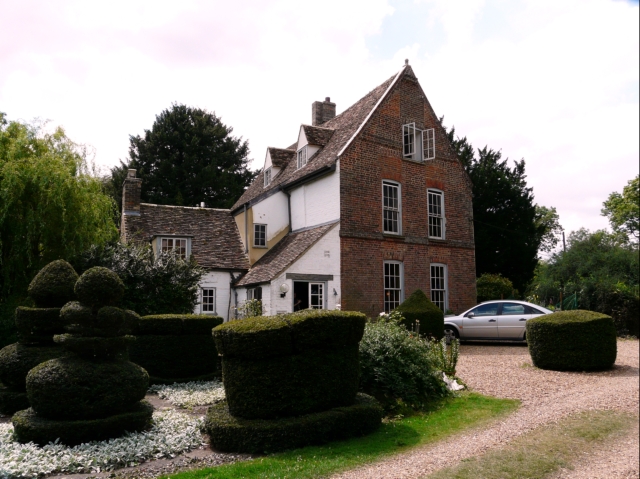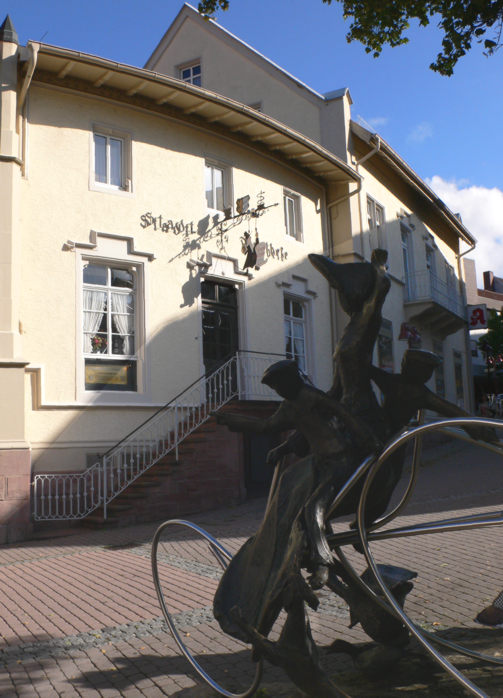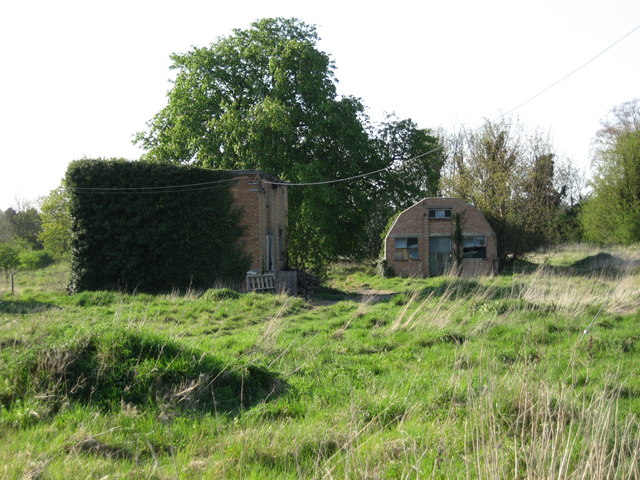|
Hemingford Grey
Hemingford Grey is a village and civil parish in Cambridgeshire, England. Hemingford Grey lies approximately east of Huntingdon. Hemingford Grey is situated within Huntingdonshire which is a non-metropolitan district of Cambridgeshire as well as being a historic county of England. History In Anglo-Saxon times the neighbouring villages of Hemingford Grey and Hemingford Abbots were a single estate. In the ninth century they were split into two. In 1066 "Little Hemingford", as it was known, was acquired by nearby Ramsey Abbey. Hemingford Grey was listed in the Domesday Book of 1086 in the Hundred of Toseland in Huntingdonshire; the name of the settlement was written as ''alia Emingeforde'' and ''Emingeforde'' in the Domesday Book. In 1086 there were three manors at Hemingford Grey; the annual rent paid to the lords of the manors in 1066 had been £17 and the rent had fallen to £16 in 1086. The Domesday Book does not explicitly detail the population of a place but it records th ... [...More Info...] [...Related Items...] OR: [Wikipedia] [Google] [Baidu] |
Huntingdon
Huntingdon is a market town in the Huntingdonshire district of Cambridgeshire, England. The town was given its town charter by John, King of England, King John in 1205. It was the county town of the historic county of Huntingdonshire. Oliver Cromwell was born there in 1599 and became one of its Member of Parliament (United Kingdom), Members of Parliament (MP) in 1628. The former Conservative Party (UK), Conservative Prime Minister of the United Kingdom, Prime Minister (1990–1997) John Major served as its MP from 1979 United Kingdom general election, 1979 until his retirement in 2001 United Kingdom general election, 2001. History During the Roman Empire, in 274, a massive coin hoard dating to the reign of Tetricus I and Roman Emperor Aurelian was hidden in the grounds of the town. Consisting of 9,724 Roman coins, and discovered in 2018, the Muddy hoard, Muddy Hoard is considered to date the largest treasure trove of Cambridgeshire. Huntingdon was founded by the Anglo-Saxons a ... [...More Info...] [...Related Items...] OR: [Wikipedia] [Google] [Baidu] |
The Manor (Cambridgeshire)
The Manor is a house in the village of Hemingford Grey, Cambridgeshire. It was built around 1160, or may have been built as early as the 1130s and is one of the oldest continuously inhabited houses in Britain — sometimes claimed by some to be ''the'' oldest, although this is disputed, with the officially recognised oldest continually occupied house in Britain being in Saltford. Much of the original house remains intact despite various changes over nine centuries. During the early 18th century, the manor was home to the "Beautiful Miss Gunning", sisters Maria and Elizabeth Gunning, who had a reputation of being among the most beautiful women in Europe. William Cowper, the poet, on observing them whilst walking his dog by the river described them as "two nymphs adorned with every grace". Maria later married the Earl of Coventry. Elizabeth was married twice, firstly to the Duke of Hamilton and secondly to the Duke of Argyll Duke of Argyll () is a title created in the ... [...More Info...] [...Related Items...] OR: [Wikipedia] [Google] [Baidu] |
Administrative County
An administrative county was a first-level administrative division in England and Wales from 1888 to 1974, and in Ireland from 1899 until 1973 in Northern Ireland, 2002 in the Republic of Ireland. They are now abolished, although most Northern Ireland lieutenancy areas and Republic of Ireland counties have the same boundaries as former administrative countries. History England and Wales The term was introduced for England and Wales by the Local Government Act 1888, which created county councils for various areas, and called them ''administrative counties'' to distinguish them from the continuing ''statutory counties''. In England and Wales the legislation was repealed in 1974, and entities called ' metropolitan and non-metropolitan counties' in England and 'counties' in Wales were introduced in their place. Though strictly inaccurate, these are often called 'administrative counties' to distinguish them from both the historic counties, and the ceremonial counties. Sco ... [...More Info...] [...Related Items...] OR: [Wikipedia] [Google] [Baidu] |
Local Planning Authority
A local planning authority (LPA) is the local government body that is empowered by law to exercise urban planning functions for a particular area. They exist in the United Kingdom and India. United Kingdom Mineral planning authorities The role of mineral planning authority is held by county councils, unitary authorities and national park authorities. Waste planning authorities The role of waste planning authority is held by county councils, unitary authorities and national park authorities. England For most matters, the planning authority is the borough, district or unitary council for the area. The non-metropolitan county councils (where they exist) are the planning authorities for minerals, waste and their own developments, such as most schools, care homes, fire stations and highways. The Mayor of London has the right to become the local planning authority for individual applications already submitted to a local planning authority. the local planning authorities in Englan ... [...More Info...] [...Related Items...] OR: [Wikipedia] [Google] [Baidu] |
Electoral Roll
An electoral roll (variously called an electoral register, voters roll, voters list, poll book or other description) is a compilation that lists persons who are entitled to vote for particular elections in a particular jurisdiction. The list is usually broken down by electoral districts, and is primarily prepared to assist election officials at polling places. Most jurisdictions maintain permanent electoral rolls, which are updated continuously or periodically (such as France which updates them annually), while some jurisdictions compile new electoral rolls before each election. Electoral rolls are the result of a process of voter registration. In most jurisdictions, voter registration (and being listed on an electoral roll) is a prerequisite for voting at an election. Some jurisdictions do not require voter registration, and do not use electoral rolls, such as the state of North Dakota in the United States. In those jurisdictions a voter must provide identification and proof of ... [...More Info...] [...Related Items...] OR: [Wikipedia] [Google] [Baidu] |
Parish Councils In England
A parish council is a civil local authority found in England, which is the lowest tier of Local government in England, local government. Parish councils are elected corporate bodies, with variable tax raising powers, and they carry out beneficial public activities in geographical areas known as civil parishes. There are about 10,480 parish and town councils in England. Parish councils may be known by different #Alternative styles, styles, they may resolve to call themselves a town council, village council, community council, neighbourhood council, or if the parish has city status in the United Kingdom, city status, it may call itself a city council. However their powers and duties are the same whatever name they carry.Local Government and Public Involvement in Health Act 2007 Parish councils receive the majority of their funding by levying a Local government in England#Precepting authorities, precept upon the council tax paid by the residents of the parish (or parishes) covered ... [...More Info...] [...Related Items...] OR: [Wikipedia] [Google] [Baidu] |
Petrol Station
A filling station (also known as a gas station [] or petrol station []) is a facility that sells fuel and engine lubricants for motor vehicles. The most common fuels sold are gasoline (or petrol) and diesel fuel. Fuel dispensers are used to pump gasoline, diesel, compressed natural gas, compressed hydrogen, hydrogen compressed natural gas, liquefied petroleum gas, liquid hydrogen, kerosene, alcohol fuels (like methanol, ethanol, butanol, and propanol), biofuels (like straight vegetable oil and biodiesel), or other types of fuel into the tanks within vehicles and calculate the financial cost of the fuel transferred to the vehicle. Besides gasoline pumps, one other significant device which is also found in filling stations and can refuel certain (compressed-air) vehicles is an air compressor, although generally these are just used to inflate car tires. Many filling stations provide convenience stores, which may sell convenience food, beverages, tobacco products, lott ... [...More Info...] [...Related Items...] OR: [Wikipedia] [Google] [Baidu] |
Fowlmere
Fowlmere is one of the southernmost villages in Cambridgeshire, England. The population of the civil parish at the 2011 Census was 1,206. It is very close to the Imperial War Museum Duxford, and southwest of the city of Cambridge. History The village has an ancient landmark called the ‘Round Moat’, which is the remains of an early Saxon settlement dating from around the ninth century. The Census Records from 1841 to 1891 can be found in the Cambridge Record Office. In addition, the 1851 Census for Fowlmere is available in full transcript form, on microfiche, from thCambridgeshire Family History Society Bookstall The village was struck by an F1/T2 tornado on 23 November 1981, as part of the record-breaking nationwide tornado outbreak on that day. Village life Fowlmere has one pub, ''The Chequers'', which has operated since the 16th Century. It served as a coaching inn for travellers going into and from Cambridge and was even used as coffin storage for those tra ... [...More Info...] [...Related Items...] OR: [Wikipedia] [Google] [Baidu] |
John Ramsay, 1st Earl Of Holderness
John Ramsay, 1st Earl of Holderness (May 1, 1588 – January 1626), known as Sir John Ramsay between 1600 and 1606, and as the Viscount of Haddington between 1606 and 1621, was an important Scottish aristocrat of the Jacobean era, best known in history as the first favourite of James I when he became king of England as well as Scotland in 1603. Correct DOB May 1, 1588. See A. Thrush “House of Lords 1603-1660”. DOB often mistakenly given as c 1580. Gowrie conspiracy Ramsay was a page at the Scottish court when the so-called Gowrie Conspiracy occurred in 1600. The actual nature of that affair is deeply disputed; the most likely account is that the young Ramsay stabbed Alexander Ruthven, Master of Gowrie, and the Earl of Gowrie to death with his dagger, helping to frustrate a plot to either kidnap or murder King James VI of Scotland. Ramsay was knighted in 1600, and was created Viscount of Haddington and Lord Ramsay of Barns in the Scottish peerage on 11 June 160 ... [...More Info...] [...Related Items...] OR: [Wikipedia] [Google] [Baidu] |
Sir George Howard (courtier)
Sir George Howard (c.1525–1580) was an English courtier, politician, author and diplomat, and the brother of King Henry VIII's fifth queen, Catherine Howard. Howard held offices at court under four monarchs, Henry VIII, Edward VI, Mary I, and Elizabeth I, most notably the office of Master of the Armoury, and undertook several diplomatic missions. A masque written by Howard was produced at court during the reign of Edward VI, and he is mentioned by name in the Langham letter, which describes the Earl of Leicester's entertainment of Queen Elizabeth at Kenilworth Castle in July 1575. Life Howard was the third son of Lord Edmund Howard (c.1478 – 19 March 1539), the third son of Thomas Howard, 2nd Duke of Norfolk by his first wife, Elizabeth Tilney. Lord Edmund Howard was reputed a spendthrift who wasted the lands he obtained through his first marriage to Joyce Culpeper, the daughter and coheir of Sir Richard Culpeper of Oxen Hoath, Kent, and 'fled abroad to avoid his c ... [...More Info...] [...Related Items...] OR: [Wikipedia] [Google] [Baidu] |





